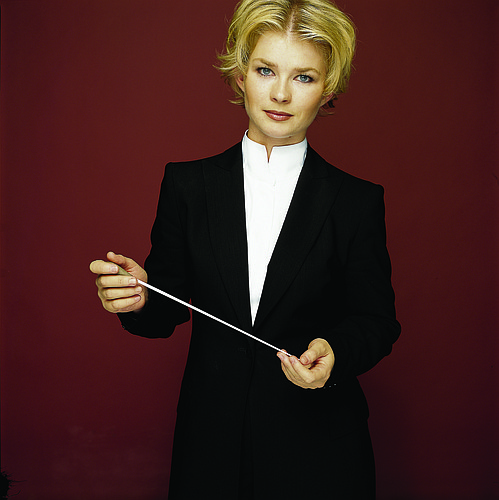- November 26, 2024
-
-
Loading

Loading

I was proud to be a Sarasotan before Anu Tali arrived, but now that she’s here as the new music director of the Sarasota Orchestra, I could pop my buttons. And, coming from a born-and-bred Manhattanite brought up with the New York Philharmonic, that’s saying a lot.
Tali’s official debut with the orchestra took place this weekend, and she and her forces pretty much blew the roof off the Van Wezel. This is a conductor with a concept. She seems to practice and preach the musical concepts of long lines, tension, phrasing and detail. But she never loses the forest for the trees.
Tali and the 27-year-old Czech pianist, Lukas Vondraceck, collaborated on a brilliant reading of Rachmaninoff’s “Rhapsody on a Theme of Paganini,” bringing out inner voices and colors that made this work seem reborn. There were ripples of humor, stretches of passion and intense musicality that delineated the kind of music-making generally relegated to the best of chamber performances.
Vondracek, whose technique and artistry seem infinite, pulled colors from his instrument like Chagall painting murals. And, while he was tossing off staccatos, Tali had the orchestra plucking pizzicatos that were like crystals snapping from a branch. This was a crisp but hot-blooded performance that fused the orchestra with the pianist so, under Tali’s incisive direction, it wasn’t soloist pitted against accompanists but, rather, a cohesive merger of musicians listening and attuned to each other to bring out what the composer intended. Exciting stuff.
Heino Eller’s “Koit” ("Dawn") opened the program with a sense of expectancy like the sun sliding from the darkness. Eller, an Estonian composer who lived until 1970, wrote this programmatic piece with a northern sound that seems to echo the fiords with a splash of Debussy’s “La Mer” and a touch of Mahler. Opening in a minor key with a lonely, dark oboe solo, it transforms into the radiance of sunshine, giving each of the orchestra’s sections a chance to play brilliantly.
But it was in the Dvorak Seventh Symphony that the musicians really gave us an idea of what lies ahead for this ensemble and its new conductor. Here, even more than before, there was a unity and fullness of sound that opened the door to real greatness. Definition. Clarity. Long lines with character, arch, delineation and forward motion.
From the gorgeous “Immer Leiser” melody in the first movement to the stirring, organ-like finale, Tali pulled sounds from her ensemble that we’d not heard before but we look forward to hearing again.
The thunderous roar from the audience after the last note was more like a crowd witnessing a grand-slam homer. That’s what should happen in classical music. That’s the excitement we want and crave. And, if that weren’t enough, after giving credit to her wonderful musicians, Tali turned her back to us and led the most Hungarian of Brahms’ Hungarian Dances you could imagine. Fiery, zesty, a little drunken gypsy-like, it was the perfect encore for a perfect performance.